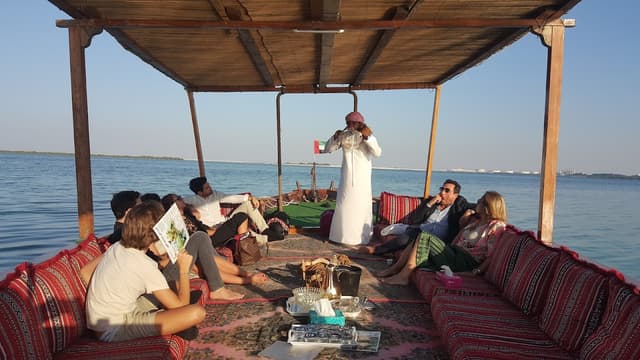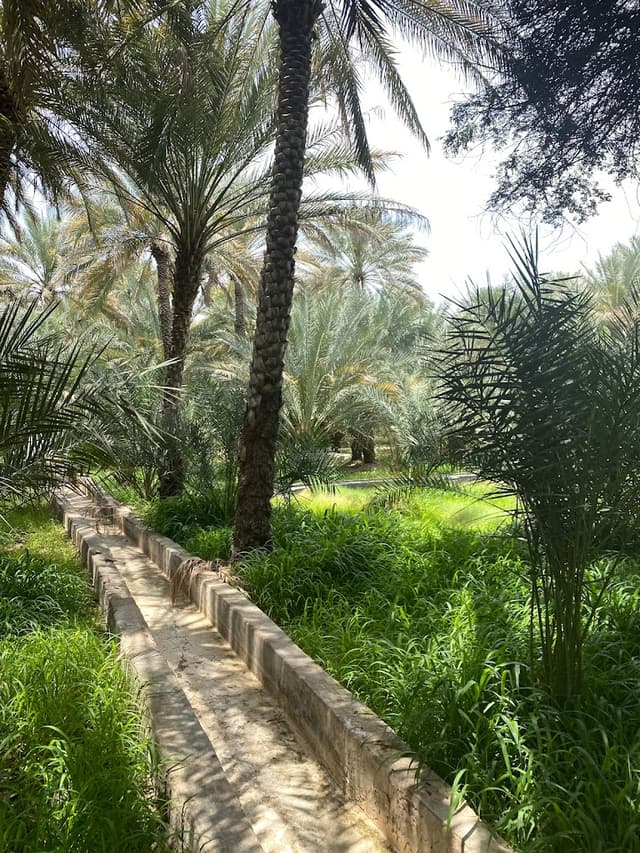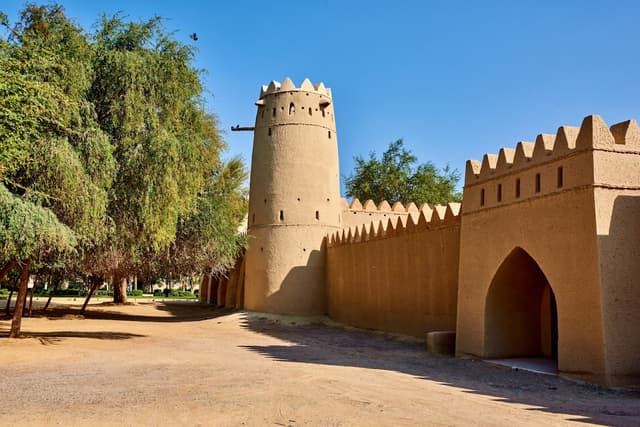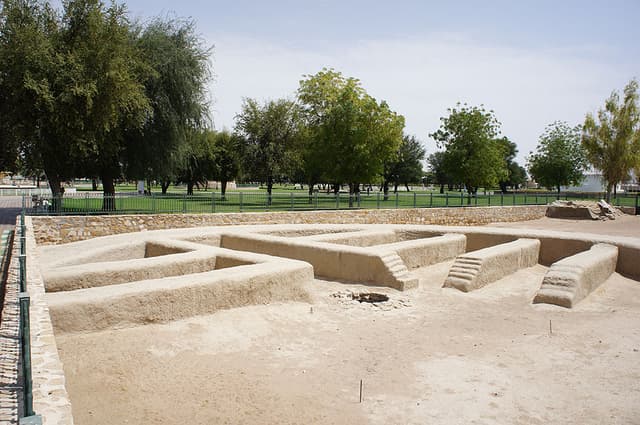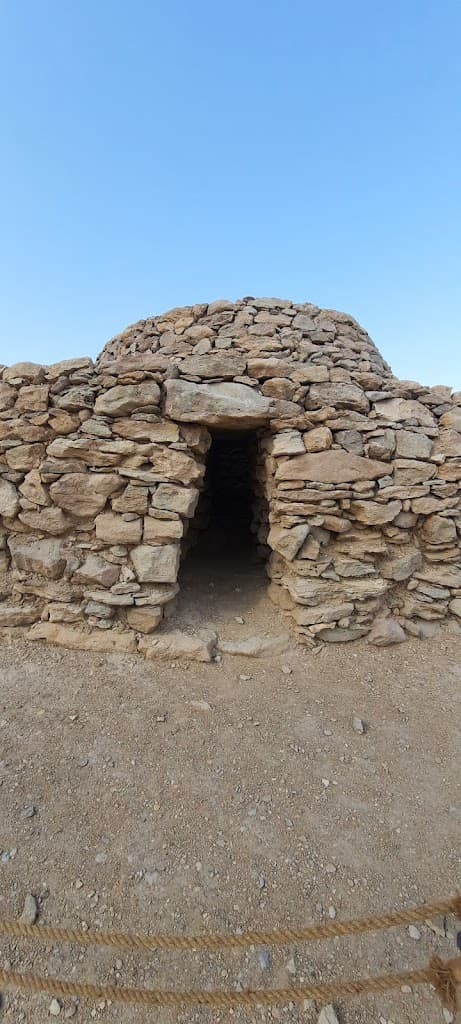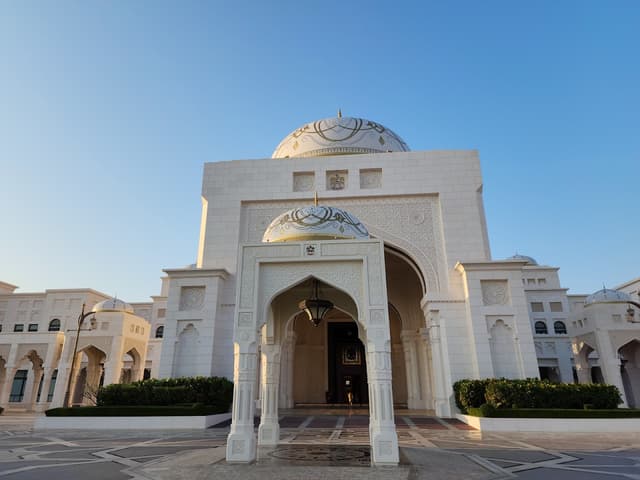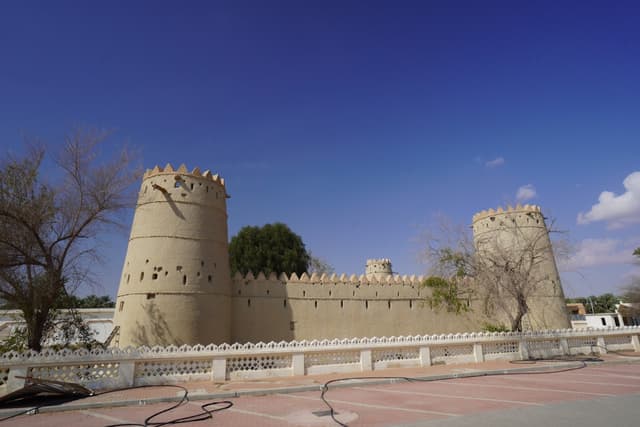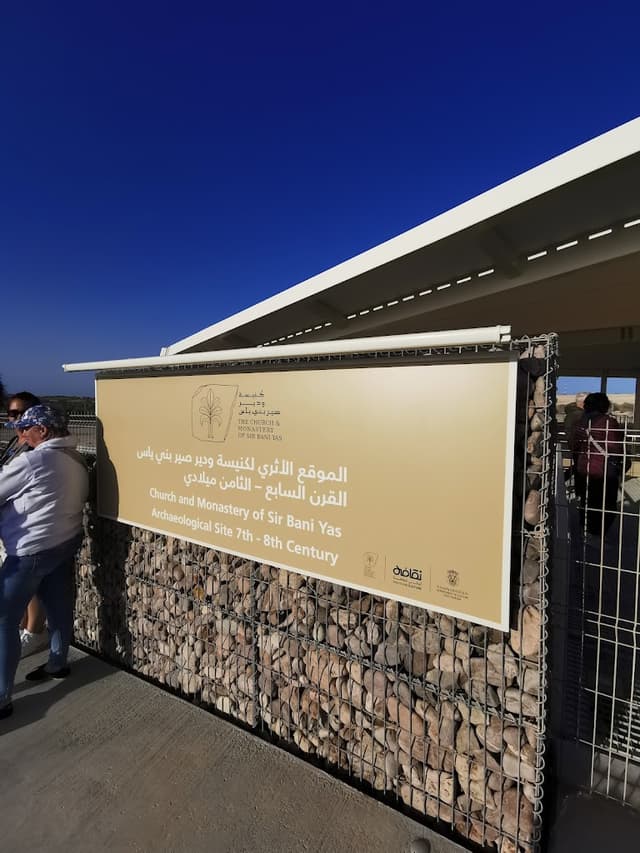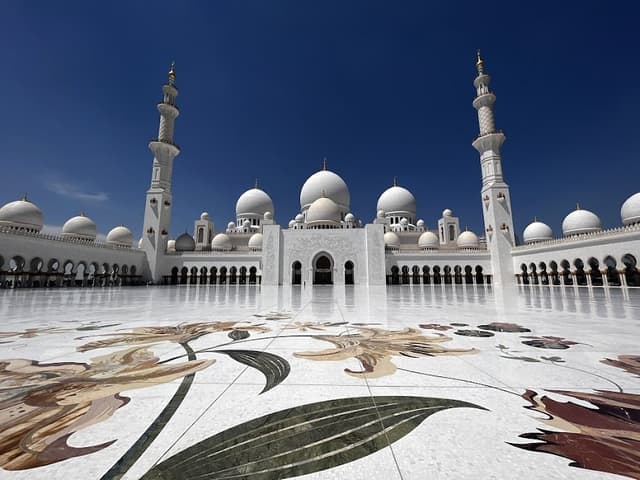Qasr Al Hosn
@vanillanoor
A visit to Qasr Al Hosn, Abu Dhabi's oldest standing structure, is a must for history enthusiasts. Built in the 1790s, this former royal residence was transformed into a museum in 2018, showcasing ancient artifacts. Explore the Inner Fort from 1795 and the Outer Palace, built between 1939 and 1945. Don’t miss The House of Artisans, where traditional crafts like Sadu weaving and date palm leaf weaving (khoos) are still practiced. Discover this cultural hub that preserves the rich heritage and traditions of Abu Dhabi.

Details
Abu Dhabi Pearl Journey
@vanillanoor
Set sail on a traditional Jalboot and journey between Abu Dhabi and Hudayriat Island to uncover the rich history of pearling. In 2019, Abu Dhabi revealed the world’s oldest natural pearl, an astonishing 8,000 years old. The 90-minute tour departs from Anantara Eastern Mangroves Abu Dhabi Hotel, where you’ll dive into the pearling past, savor Arabic coffee and dates, and experience the melodies of Emirati sea-faring songs.

Details
Al Ain Oasis
@vanillanoor
For a true desert oasis experience, visit Al Ain, the UAE’s first UNESCO World Heritage Site. Wander through Al Ain Oasis along shaded paths lined with date palms, and discover the ancient falaj irrigation system that has sustained life here for centuries. Immerse yourself in the tranquil beauty of this historic sanctuary, where traditional farming practices and the sounds of nature bring the past to life.

Details
Al Jahili Fort
@vanillanoor
Al Jahili Fort, one of the UAE's largest, was originally home to members of the ruling Al Nahyan family, it now features a permanent exhibition dedicated to explorer and photographer Sir Wilfred Thesiger, along with a rotating gallery. While you're there, don't miss the nearby Jahili Mosque.

Details
Hili Archaeological park
@vanillanoor
For a journey back in time, visit The Hili Archaeological Park, home to ancient village remains from the Bronze Age (3000-1300 BCE) and Iron Age (1300-300 BCE). Between 2500 and 2000 BCE, the Hili community flourished, leaving behind tombs and buildings from the ‘Umm an-Nar’ culture, named after the Abu Dhabi island where it was first discovered. Don’t miss the Hili Grand Tomb, a 4,000-year-old structure spanning 12 meters in diameter. Though it likely had a roof originally, it now stands open to the sky.

Details
Jebel Hafit Desert Park
@vanillanoor
For a glimpse into the Bronze Age, visit Jebel Hafit Desert Park, home to beehive-shaped tombs dating back to 3200-2700 BCE. Explore this ancient landscape and discover Mesopotamian pottery, as well as beads, spearheads, and daggers from the second millennium BCE.

Details
Qasr Al Watan
@vanillanoor
Explore the grandeur of Qasr Al Watan, the Palace of the Nation, in the heart of Abu Dhabi. This stunning architectural gem showcases the UAE’s rich heritage and culture. Inside, you'll find halls adorned with intricate mosaics, chandeliers, and artwork, offering a glimpse into the nation’s governance. Discover galleries with rare artifacts, historical documents, and interactive exhibits tracing the UAE's journey from its Bedouin roots to modern prominence. Don’t miss the "Palace in Motion" show, a visual and musical spectacle that brings the palace’s facade to life with the story of the UAE’s past, present, and future.

Details
Qasr Al Muwaiji - قصر المويجعي
@vanillanoor
Qasr Al Muwaiji is a must-visit, notably as the birthplace of the late President Sheikh Khalifa bin Zayed Al Nahyan. Since the 1970s, the fort has undergone extensive restorations, culminating in a major regeneration project that transformed it into a key public venue in Al Ain. The site now features an exhibition hall that explores the fort’s rich history.

Details
Al Ain National Museum
@vanillanoor
To grasp Al Ain’s evolution from the Stone Age to the founding of the UAE, visit the Al Ain Museum, the country’s oldest, established in 1969 by Sheikh Zayed bin Sultan Al Nahyan. The museum showcases artifacts like flint tools and arrowheads from the sixth millennium BCE. On the museum grounds, you’ll also find the well-preserved Sultan Fort, a historic mud brick structure with three towers.

Details
The Church & Monastery of Bani Yas
@vanillanoor
In the early 1990s, an archaeological discovery on Sir Bani Yas Island uncovered a church, a monastery, and courtyard houses from the 7th and 8th centuries CE. This find represents the earliest known evidence of Christianity in the UAE. The church’s identification was confirmed by plaster crosses and its architectural style, similar to ancient churches in the Arabian Gulf.

Details
Sheikh Zayed Grand Mosque
@vanillanoor
The Grand Mosque offers a profound sense of tranquility with its 82 domes, 1,192 columns, and a blend of Moorish, Mughal, Ottoman, Fatimid, and Mameluke architectural styles. It features the world’s largest hand-knotted carpet and a stunning 12-tonne chandelier. The mosque's call to prayer echoes across Abu Dhabi five times daily, highlighting its role as a major spiritual center. Attracting around 55,000 visitors daily, the Sheikh Zayed Grand Mosque is a must-visit for its cultural and religious significance.

Details
Facts about ancient Abu Dhabi
Here are some snippets about its historical journey:
Ancient settlements
Archaeological evidence indicates human settlement in the Abu Dhabi region for over 7,000 years, revealing the presence of nomadic tribes and early civilizations.
Pearl diving era
Before the discovery of oil, Abu Dhabi’s economy relied heavily on pearl diving and fishing, contributing to its maritime heritage.
Bani Yas tribe
In the 19th century, Abu Dhabi and the other emirates signed treaties with the British, becoming collectively known as the Trucial States.
Oil discovery
The discovery of oil in 1958 marked a turning point for Abu Dhabi, transforming its economy and accelerating rapid development throughout the 20th century.
Formation of the United Arab Emirates
In 1971, Abu Dhabi was pivotal in the formation of the United Arab Emirates, joining six other emirates to establish a unified sovereign nation.
* * *


